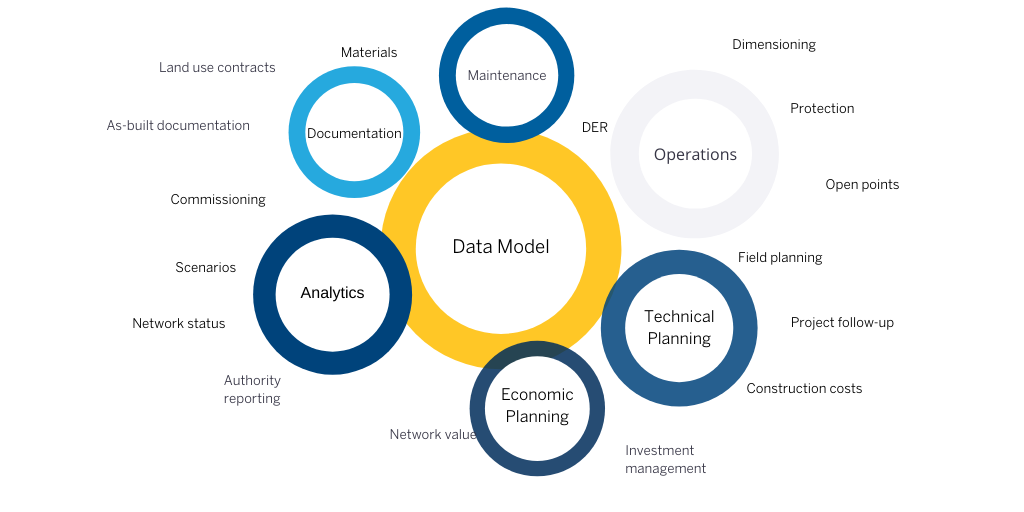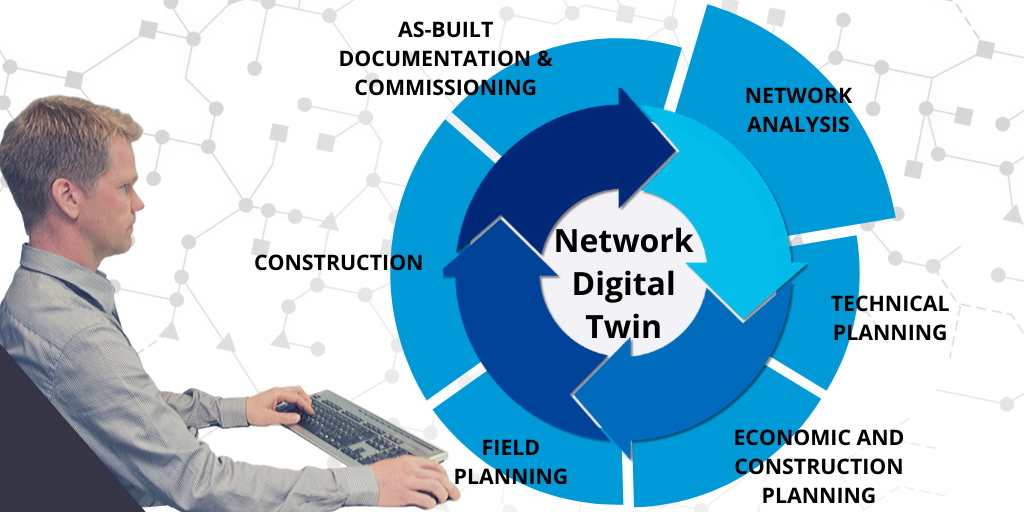Book traversal links for Creating your Network's Digital Twin
From the very beginning, the core of Trimble's solution for managing electrical distribution networks has been about combining asset data with geospatial information and electro-technical data. Knowing what your assets are, where they are located at and how they connect to each other is more than just documenting your network, it is about composing a model, a digital twin, for your network. And on top of that model, you have an ever expanding set of features from searching and analyzing to planning and running your network operations.
How does the network model emerge, then? Investment needs set off from various origins but let’s use a case with a plan for a new residential area.

It all starts with a general plan - a rough idea on what’s to come based on a town plan. The first draft of the network model is created based on analyzing different data: What type of building stock is planned? What the infrastructure will look like? And what type of electricity consumption is to be expected?
The model is not detailed and the locations are merely rough estimates but it already creates foundation for the investment decision by enabling cost calculation and power system analysis / engineering analysis.

Once the investment decision has been made, it is time to start planning the implementation on a more detailed level. Decisions are made on line and component types, more detailed asset and technical values, predicted consumptions and actual routes and locations. The model of the planned new network is connected to the existing network model and evaluated for dimensioning and protection. Adjustments are made based on the results and the model is re-evaluated.
After reaching an electro-technically valid network model, the implementation planning continues with construction planning, covering construction costs and materials required. The field planner can then take the plan to the field and apply GPS located routes and locations directly to the network model making the plan more accurate for the contractor responsible for the construction. Also other observations affecting the execution of the construction work are documented.

And when it is time to start the construction work, the contractor can be handed a detailed plan enhanced with visualizations and materials connected to the relevant network locations. That is to say, a clear description of what needs to be built and where - and how it connects to the existing network. After the construction work is finalized, the as-built documentation completes the network model with final accurate locations and it is implemented to the master network model. The network model becomes more detailed and the locations more accurate at every phase of the planning process.
As an end result of the planning process, you end up with a digital twin of the electrical network - just in the beginning of its life-cycle. On top of that, add all the data that accumulates during time through network operations and maintenance. At any given time you will have the most accurate network asset data to analyze and to base your future investment decisions on. And all of this can be done within one solution.



